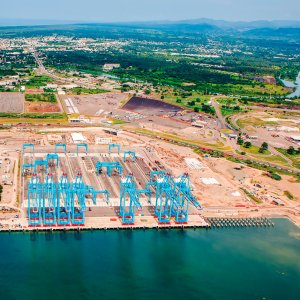Transforming NAICM into an 'Aerotropolis'

STORY INLINE POST
Q: What role can airports play in the country’s economic development?
A: Given the passenger growth in the Latin America region in the last decade, there have been unique opportunities to modernize the airport infrastructure associated with the expansion of terminals. Mexico is an example of this context, as well as the pressures and opportunities created bygrowthintheindustry.SITAhasbeenworkingwiththe major airlines in the country for many years, integrating new technologies into airports as they are released into the market. At the moment, the new Terminal 4 at the Cancun International Airport is being constructed with the vision of becoming a “terminal of the future,” equipped with state- of-the-art technologies. The design of the New Mexico City International Airport (NAICM) promises to be a cornerstone of this vision by becoming the most technically advanced airport in the region. Air transport grows in correlation with the economic development of a country and NAICM is in the unique position to become an important international hub. The underlying design principles of this airport introduce flexibility to support the adoption of new processes and enable a forward-looking vision.
Q: What specific systems will you put in place in NAICM to ensure it is more efficient than Benito Juarez airport?
A: Common-use infrastructure is key to ensuring an efficient use of resources, which benefits both airports and airlines by reducing costs. Secondly, improvements must be made in terms of passenger flow and baggage processing. The further introduction of self-service, automation, biometrics and passenger/baggage flow monitoring solutions are important to improve on this dimension. In terms of ongoing operations, effectively managing airport resources and the airport capacity to react in real time to disruptions is vital. The introduction of Business Intelligence, Collaborative Decision Making (ACDM), an effective and integrated Airport Management System (AODB/AMS) and a centralized, secure and integrated Airport Operational Control Center (AOCC) are imperative.
Q: How does technology factor into the modernization of airports?
A: It is critical that airports recognize the strategic role of technology in airport development and their associated Airport Master Plans. Technology has become a strategic component of airport master plans because it generates
operational efficiencies, which are directly linked to the 199 airport’s bottom line by optimizing assets, and ultimately reduces the need for investment. Airports are gaining a better understanding of how technology can be used to generate revenue through the use of common infrastructure, as well as increasingly commercializing the airport environment. Our personalized solutions allow airports to capitalize on their investment with appropriate marketing platforms, and the idea of an “Aerotropolis” also allows them to create revenue from the development of an ecosystem.
Q: What innovative technologies will SITA integrate into NAICM?
A: Our Airport Master Systems Integration (MSI) solution incorporates a full range of airport technology and the program management capability to deliver an end-to- end integrated solution. Through Airport MSI, SITA brings together technology suppliers into a single program of works that integrates into the airport’s master building plan. This is one of the key success factors to delivering airport construction projects on time and on budget. Within SITA Airport MSI, integration addresses two different practices, each targeting a specific community of stakeholders in the terminal’s construction. The first is program integration, which refers to blending the project management of multiple technology work packages into a consolidated whole for onward integration into the construction company’s terminal building program. This integration aspect is relevant for both the airport operator’s engineering division and the general building contractor in charge of the overall construction project. The second is technology integration, which refers to the stitching together of disparate technologies, platforms and systems to share data, functions or events to support the airport business processes. This aspect of integration is crucial for airport operators and other stakeholders, such as airlines, ground handlers and security.





















